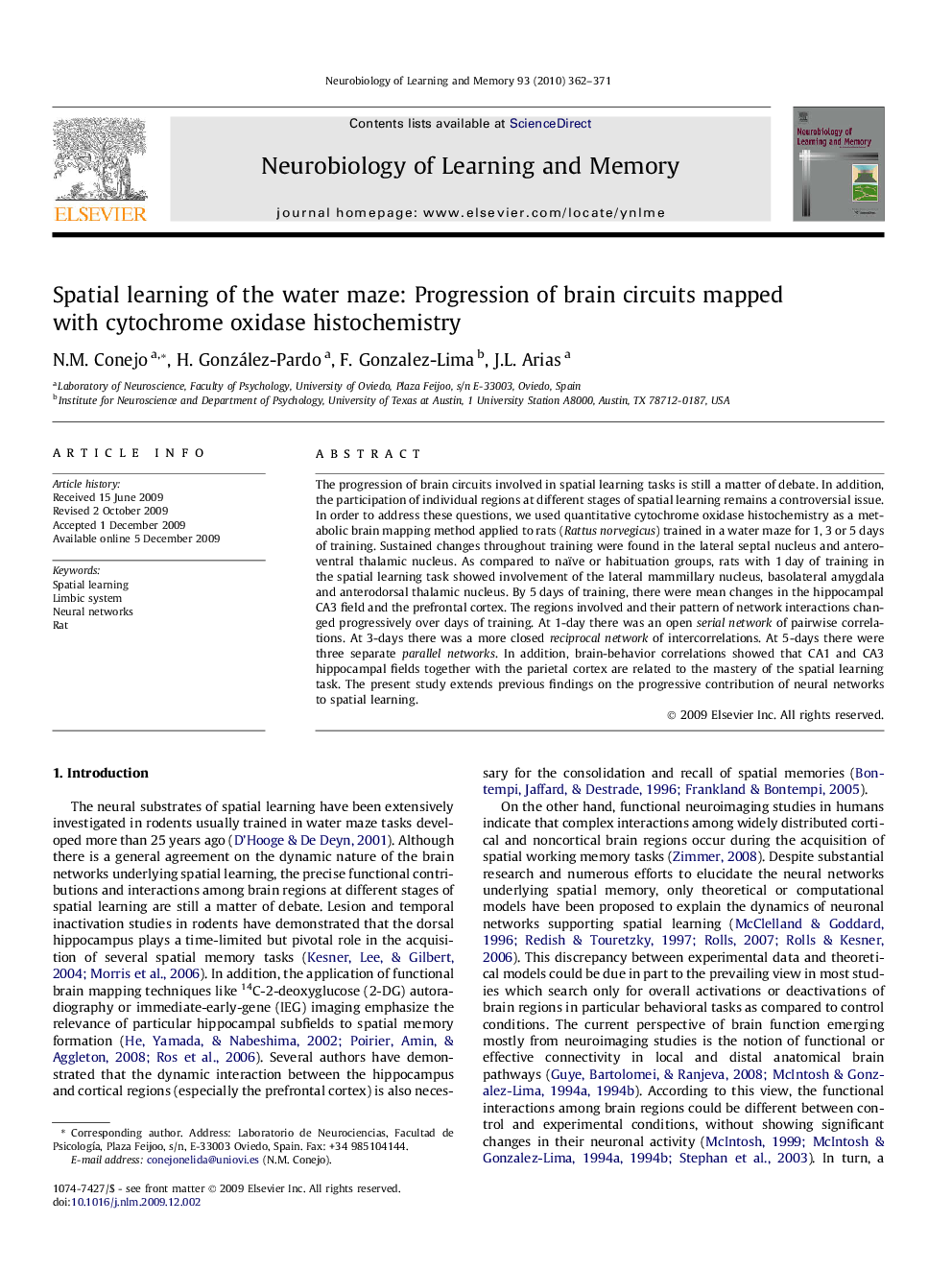| Article ID | Journal | Published Year | Pages | File Type |
|---|---|---|---|---|
| 936923 | Neurobiology of Learning and Memory | 2010 | 10 Pages |
The progression of brain circuits involved in spatial learning tasks is still a matter of debate. In addition, the participation of individual regions at different stages of spatial learning remains a controversial issue. In order to address these questions, we used quantitative cytochrome oxidase histochemistry as a metabolic brain mapping method applied to rats (Rattus norvegicus) trained in a water maze for 1, 3 or 5 days of training. Sustained changes throughout training were found in the lateral septal nucleus and anteroventral thalamic nucleus. As compared to naïve or habituation groups, rats with 1 day of training in the spatial learning task showed involvement of the lateral mammillary nucleus, basolateral amygdala and anterodorsal thalamic nucleus. By 5 days of training, there were mean changes in the hippocampal CA3 field and the prefrontal cortex. The regions involved and their pattern of network interactions changed progressively over days of training. At 1-day there was an open serialnetwork of pairwise correlations. At 3-days there was a more closed reciprocal network of intercorrelations. At 5-days there were three separate parallelnetworks. In addition, brain-behavior correlations showed that CA1 and CA3 hippocampal fields together with the parietal cortex are related to the mastery of the spatial learning task. The present study extends previous findings on the progressive contribution of neural networks to spatial learning.
